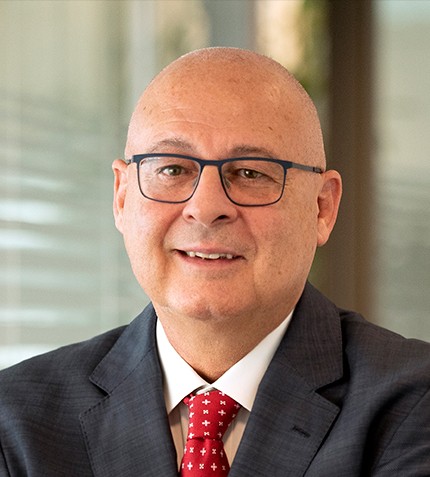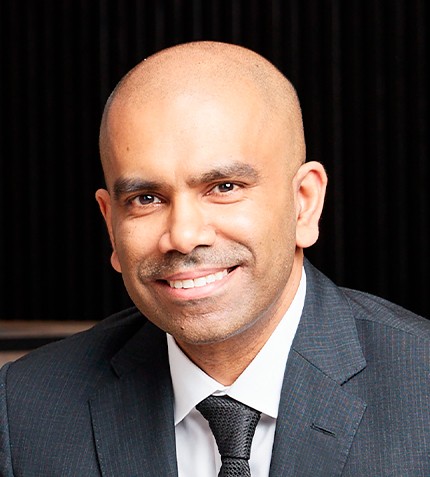
"Brazil, as a leading producer of critical minerals including iron ore, bauxite, copper, and nickel, has a significant role to play in building the industry of the future."
Rohitesh Dhawan
CEO, INTERNATIONAL COUNCIL ON MINING & METALS (ICMM)
How can the Brazilian mining industry add value?
The way to think about value added from mining is that the industry transforms natural capital into social and economic capital. When done well, it can even increase the stock of natural capital through activities like reforestation and conservation.
By harvesting resources that exist underground, responsible mining transforms them into value for society both through the role mining plays in social and economic development and in producing vital products. The supply of some metals and minerals will need to increase up to 20 times in the next 30 years if we are to successfully decarbonize the global economy while enabling social and economic development.
But while producing these metals will be critical it should not be done at all costs. To be perfectly honest, if not done responsibly, mining can destroy societal value – sometimes irreparably so. Society then rightly expects that all miners should be operating in a way that puts people and the planet first. Brazil, as a leading producer of critical minerals including iron ore, bauxite, copper, and nickel, has a significant role to play in building the industry of the future.
Why is Brazil’s mining industry poised for growth?
Three major trends are occurring in the global mining industry, and Brazil is generally favorably positioned on all three trends. The first is a shortage of critical and strategic minerals. Brazil is one of the most mineral-rich countries in the world. If you take a group of commodities that includes nickel, graphite, manganese, and rare earths, Brazil holds about one-fifth of the global resource base of each of these but has less than 10% of the worldwide share of production and, in some cases, less than 1%. Production of these minerals is much less than the actual resources and reserves of the country, and that is before accounting for the fact that the amount of exploration in Brazil is insufficient relative to its potential. From a supply point of view, regarding resource availability, Brazil is in a very advantageous position compared to other countries.
The second big trend happening is sustainable production. Everybody wants to make sure that minerals are produced in the most sustainable way possible. Brazil has several advantages here. 77% of Brazil’s energy is low carbon, and much of that supply is available to the industry. In this regard, Brazil affords greater opportunities and development potential than other more developed countries.
Plus, Brazilian power is relatively cheap at two cents per kilowatt hour, compared to 30 cents per kilowatt hour in some developed countries and so, energy-intensive processes, Brazil is an attractive location and investment prospect. Additionally, Brazil has incredible natural assets, including the Amazon and other natural ecosystems, that allow Brazil to be the home of nature-based solutions such as carbon offsets in a way that mining in other jurisdictions may not have access to.
The final trend is geopolitics and the desire from countries around the world to secure their supplies of critical minerals. Critical minerals are now a top-level national security and geopolitical issue, and that could shape both demand and supply for these commodities. We’re likely to see countries work unilaterally, bilaterally, and multilaterally to try and secure supplies, especially with and from other like-minded countries – the Minerals Security Partnership is just one example of this. This could exacerbate existing geopolitical tensions but could actually lead to some unlikely alliances which would be positive. Brazil is one of the few countries with good relations between the West and East, allowing it to work with many different countries. There are not that many players that are able to claim this.
What are Brazil’s major challenges as a mining jurisdiction?
There are challenges with public policy around mining that must be worked through, including issues around permitting. Ensuring that mines can be permitted more quickly without sacrificing environmental and social standards is essential. Then, of course, even though there may be policies in place, there’s a challenge of execution. It is one thing to have policies and another thing to execute them in practice. The social dimension in Brazil, the structural inequality, is a key challenge for the industry but it is not something the industry can wash its hands of. Going back far enough, the root causes of inequality can be traced to colonialism, which is also tied to mining. So, it puts an even greater responsibility on us as an industry to play a constructive role in bringing society together, reducing inequality and providing opportunities for development.
Could you provide an update on the ICMM’s work in tailings management?
The tragedies at Mariana and Brumadinho catalyzed the industry to reset tailings dam management fundamentally. It led to the Global Industry Standard on Tailings Management (GISTM), which ICMM developed together with the United Nations Environment Programme and the Principles for Responsible Investment. We have just passed a significant milestone for the standard. ICMM members committed that for tailings dams with the highest consequence classifications, extreme or very high, they would disclose their levels of conformance by August of 2023. All members have done that, including our members who operate in Brazil. For all other dams, they will do so by August 2025.
For ICMM companies, this is a top priority. We want to ensure that wherever we operate, all our dams are being managed as safely as possible in conformance with the standard. It must not stop there. We want all companies, whether they are ICMM members or not, to embrace the standard and ensure that they are managing their dams in accordance with the standard. I am proud to say that many investors have joined us in saying that they will not invest in companies or will vote against the board of companies that do not adopt the standard. We need that kind of pressure and support from other partners outside of the industry to encourage the adoption of this standard.
Another crucial part of tailings management is how to mine in the future without generating significant tailings or how to reuse them to make them safer and reduce waste. At Hydro’s Paragominas operation, we saw a fantastic technology called dry tailings backfill, where they dry the tailings from bauxite mining, keep them in safe containment areas, and then use that waste to backfill the areas they have mined so that it can be re-vegetated. Not only are you making the tailings structure much safer, but you are also using the same material to backfill and prevent waste. That is the type of innovation that the industry will need to have a future in which we can grow mining supply while shrinking the quantities of tailings we are producing.










